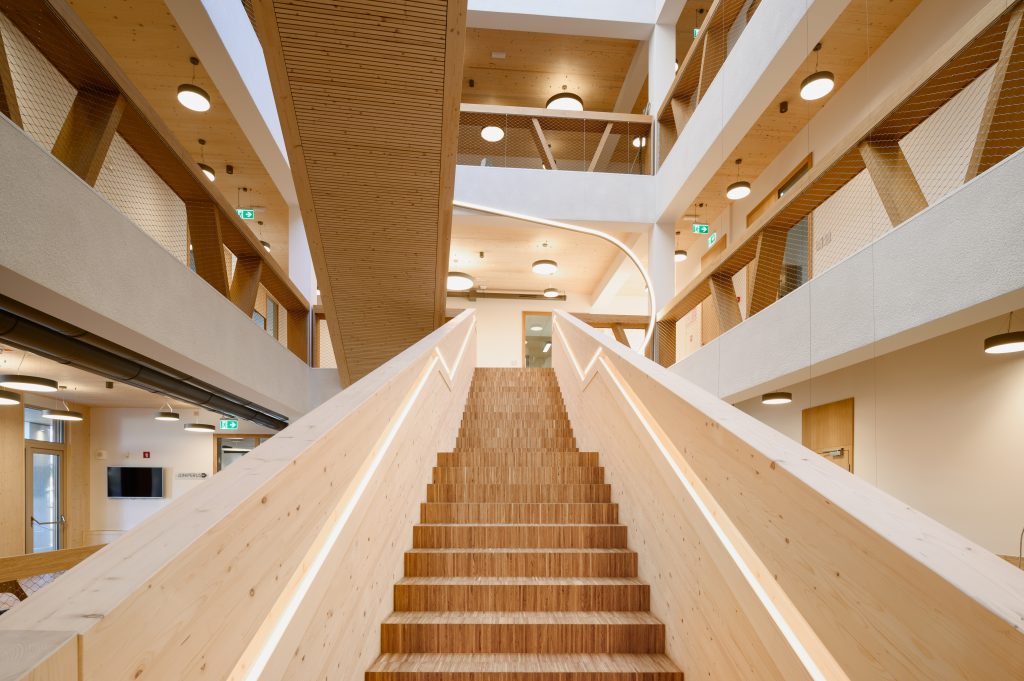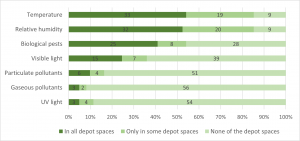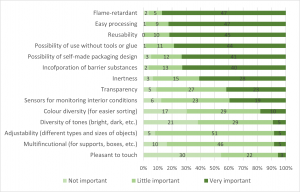
January 7, 2026

How are depots organised for long-term storage of museum objects? Do they have the right climate? What materials do museums use for packaging of museum objects? How is the transport of museum objects organised? These are just some of the many questions we asked ourselves at one of the first meetings of the Advanced Materials for Cultural Heritage Preservation project, whose main goal was to develop materials and packaging elements for the transport and long-term storage of museum objects.
Based on a review of the literature, we identified some basic characteristics of storage conditions; however, we were unable to answer questions regarding the use of packaging. Although the project had not initially foreseen it, we decided to conduct a survey. In total, 61 museums participated, which is 80 % of all invited eligible museums. Questionnaires were mainly filled out by curators and directors but sometimes by other employees.
We found that depots are often located both within the museum building and at dislocated locations. In more than half of the museums, the area of the depots is less than 250 square meters, and their average height is between two and three meters. Most of them have more than one room, and individual rooms are usually up to 100 square meters large on average.
Most museums store a large number of objects in open furniture systems, while a smaller number are kept in closed furniture systems or without furniture (Figure 1). Both closed and open furniture systems are most often made from a treated metal material; they usually store objects made of organic materials, while outside furniture systems usually store objects of certain dimensions.

Figure 1: How much of the museum items are kept in closed furniture systems, how much in open and how much without furniture?
In open furniture systems, more objects are exposed to various environmental factors than in closed furniture systems. According to the respondents, the objects are most exposed to the dust in open systems, but a high percentage of the objects’ exposure was also due to changes in temperature and relative humidity. Museums estimate that also objects in closed furniture systems are highly exposed to the latter two factors.
In most museums in Slovenia, the depots are not connected to the HVAC system. Among those who have installed in the past, it is more often a separate system with individual management for depot and exhibition spaces. Most museums with a separate HVAC system can set different climatic conditions in depots in at least a few depot spaces. The only climatic factors monitored by most museums are humidity and temperature (Figure 2). For them, museums also keep annual costs to a greater extent. Museums in depots often also monitor the presence of biological agents. Almost no museum monitors the presence of organic volatile compounds.

Figure 2: Which environmental factors do you monitor in all rooms, which only in some rooms and which in no room?
The most commonly used types of packaging are different types of boxes and papers, and the least used are fillers. In most cases, the bags and boxes in which museum objects are kept are not airtight. A large number of items are stored without packaging. Many items should have special packaging but do not have it, mostly for financial reasons (lack of finances to purchase packaging). In the eventual development of a new packaging material, the most important properties are that it is flame-retardant and easy to process (Figure 3). Having sensors is not a very important feature; however, if the packaging included them, sensors would be most useful for monitoring relative humidity and temperature.

Figure 3: How important is it that the material for long-term packaging of museum objects has the following properties?
In 2017, some museums did not allocate any funds for the purchase of packaging, and most of them did not invest in depot equipment. The plans for future investments are also modest. Almost no museum has special packaging for cases of rapid evacuation due to natural disasters. Most museums use polyethylene foil with air bubbles to transport museum objects, as well as wooden boxes and crates. Most museums also do not use vehicles equipped with air conditioning systems or any sensors to monitor the environmental conditions during the transport of museum objects.
To sum up, the storage conditions in most of the Slovenian museums are far from ideal and there is a lot of room for improvement. We hope the project results will help raise the awareness of the problem and implement solutions. More details of the study can be read in the recently published report on the survey of storage conditions of museum objects in Slovenia (pdf). In addition, results of this project, led by the Institute for the Protection of Cultural Heritage (IPCH), include the report on analytical material characterisation of selected beehive panel paintings from the collection of the Slovene Ethnographic Museum, scientific articles in journals Archaeometry, Coatings and Heritage Science, and a new material for archival packaging patented by project partners at the Institute for Pulp and Paper, which they described in the Slovenian Papir magazine. At InnoRenew CoE, the topic of cultural heritage protection is also studied within the project Protection of bronze monuments in the changing environment that is also lead by IPCH.
Ana Slavec
Consulting Statistician at InnoRenew CoE